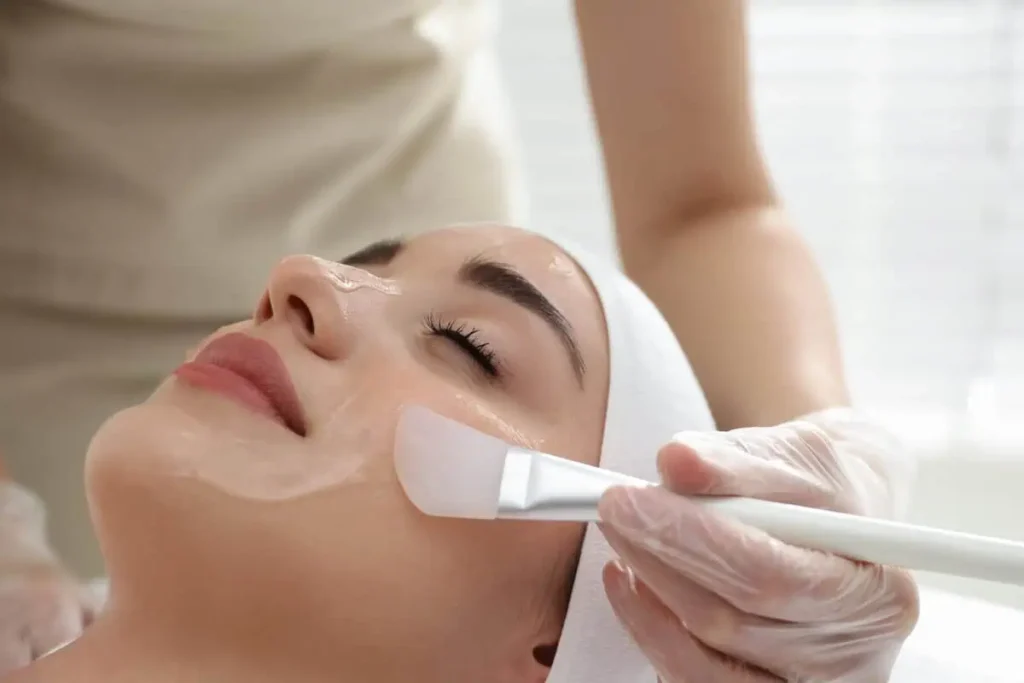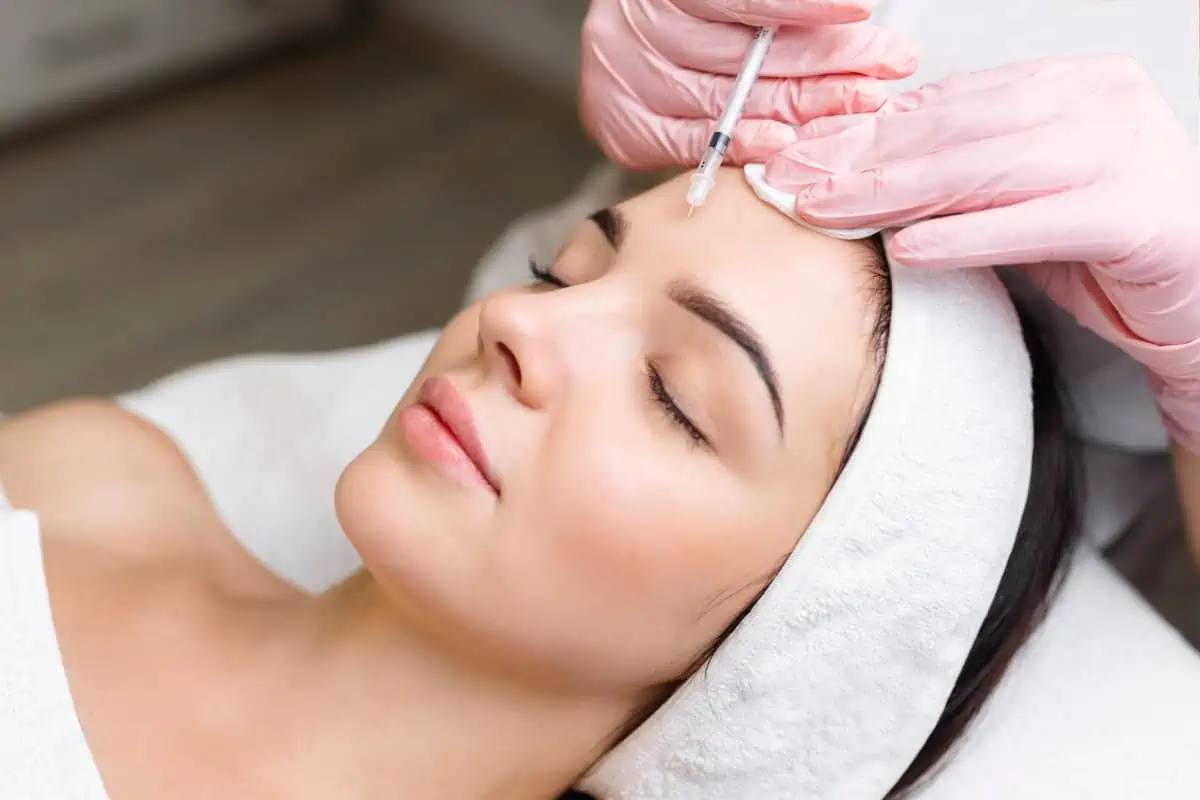
Table of Contents
Chemical peels are proven to improve your skin’s appearance and address various concerns. However, not all peels are created equal, and selecting the wrong one can lead to disappointing results or even harm your skin. That’s why understanding the different types of peels and how they work is crucial before undergoing any treatment.
So, we’ll go over the three main categories of peels—superficial, medium-depth, and deep—and explain the active ingredients used in each. You’ll learn which peels are best suited for issues like acne, hyperpigmentation, fine lines, and wrinkles and what precautions to take for sensitive skin.
Knowing Your Skin Type
There are five main skin types: normal, dry, oily, combination, and sensitive. Normal skin exhibits a well-balanced moisture level and minimal imperfections. On the other hand, dry skin lacks adequate oil production, leading to a tight, flaky appearance. In contrast, oily skin produces excess sebum, resulting in a shiny complexion and potential acne breakouts. Combination skin displays an oily T-zone (forehead, nose, and chin) with drier cheeks. Sensitive skin is tender and prone to irritation, redness, and inflammation.
In addition to identifying your primary skin type, assess any specific skin concerns you wish to address with a chemical peel. Common issues include acne or clogged pores, hyperpigmentation or uneven skin tone, fine lines and wrinkles, and rough texture.
By thoroughly evaluating both your skin type and its unique challenges, you’ll be better equipped to select a peel that effectively targets your goals without compromising your skin’s health or causing adverse reactions.
Types of Chemical Peels
Chemical peels can be broadly categorized into three types based on their penetration depth and strength: superficial/light peels, medium-depth peels, and deep peels. Here’s a breakdown of each type:
A. Superficial/Light Peels:
- Alpha Hydroxy Acid (AHA) peels
- Active ingredients: Lactic acid, glycolic acid
- Benefits: Improve skin texture, reduce fine lines, treat mild hyperpigmentation
- Best uses: Regular maintenance, mild skin concerns
B. Medium-Depth Peels:
- Trichloroacetic Acid (TCA) peels
- Active ingredient: Trichloroacetic acid
- Benefits: Treat moderate hyperpigmentation, improve texture and tone
- Best uses: More significant skin concerns like sun damage, acne scars
C. Deep Peels:
- Phenol peels
- Active ingredient: Phenol
- Benefits: Address severe skin imperfections, deep wrinkles, precancerous growths
- Best uses: Significant skin damage, deep lines and wrinkles
Each peel type offers varying levels of intensity and targets different skin concerns. Superficial peels are the gentlest, while deep peels are the most aggressive and should only be conducted by experienced professionals due to their potential for complications.
Choosing the Right Peel for Your Skin Concerns
Selecting the appropriate chemical peel depends largely on the specific skin concerns you aim to address. Here’s a breakdown of some common issues and the recommended peel types:
A. Acne-Prone Skin
- Recommended peels: Superficial alpha-hydroxy acid (AHA) peels, such as glycolic or lactic acid peels.
- Precautions: Avoid overly aggressive peels that may cause excessive irritation and inflammation, potentially worsening acne.
B. Hyperpigmentation and Uneven Skin Tone
- Recommended peels: Medium-depth trichloroacetic acid (TCA) peels or superficial AHA peels.
- Precautions: Deeper peels may lead to post-inflammatory hyperpigmentation in some individuals.
C. Fine Lines and Wrinkles
- Recommended peels: Medium-depth TCA peels or deep phenol peels for more severe wrinkles.
- Precautions: Deeper peels require more extended downtimes and carry higher risks of side effects.
D. Sensitive Skin
- Recommended peels: Superficial AHA peels or very low-strength TCA peels.
- Precautions: Avoid aggressive peels that may cause excessive irritation and inflammation.
Chemical Peel Before and After Treatment Care
Proper care before and after a chemical peel is necessary for attaining optimal results and minimizing potential complications. Here’s what you need to know:
A. Pre-Peel Care
- Avoid sun exposure and tanning beds for at least two weeks before the peel.
- Stop using retinoids, alpha-hydroxy acids, and other exfoliating products as directed by your provider.
- Gently cleanse and moisturize your skin to prevent irritation.
- Discontinue hair removal methods (waxing, threading) in the treatment area.
- Refrain from using makeup, skincare products with active ingredients, or topical medications unless approved.
B. Immediate Post-Peel Care
- Avoid strenuous exercise, saunas, and hot tubs for at least 24-48 hours.
- Use only gentle, fragrance-free cleansers and moisturizers recommended by your provider.
- Apply a broad-spectrum sunscreen with an SPF of 30 or higher whenever going outside.
- Avoid picking or peeling any flaking skin, as this can lead to scarring or discoloration.
- Follow your provider’s instructions for applying any post-peel treatments or medications.
C. Long-Term Post-Peel Care
- Continue using broad-spectrum sunscreen daily and limit sun exposure.
- Gradually reintroduce your regular skincare routine as recommended by your provider.
- Stay hydrated and use gentle, non-irritating products to support the skin’s healing process.
- Schedule follow-up appointments as advised for maintenance or additional treatments.
D. When to Schedule the Next Peel
- The frequency of chemical peels depends on the type of peel and your skin’s response.
- Superficial peels may be repeated every 4-6 weeks, while medium-depth peels require 3-6 months between treatments.
- Deep peels should only be performed once, with yearly touch-ups if necessary.
Chemical Peel Treatment Procedure: What To Expect
Upon arriving for your appointment, your skin will be thoroughly cleansed to remove any makeup, oils, or impurities that could interfere with the peel’s effectiveness. Your provider may also apply a degreasing agent to ensure the peel can penetrate properly.
Next, using a brush, sponge, or cotton-tipped applicator, the chemical solution will be carefully spread to your face (or other treatment area). You may encounter a tingling or mild stinging sensation as the peel begins to work, which is normal. The intensity of this feeling typically correlates with the strength of the peel.
For deeper peels, a handheld fan or excellent air source may be used to help manage any discomfort during the application process. Your provider will closely monitor your skin’s reaction and adjust the technique or solution as needed.
Depending on the peel type, the solution will be left on your skin for a specific amount of time, usually ranging from a few minutes to an hour or more. During this time, you may notice a warm, tightening sensation as the chemicals penetrate and begin breaking down the outermost layers of skin.
Once the appropriate time has elapsed, the peel will be neutralized or removed according to the specific product instructions. This may involve applying a neutralizing solution, rinsing with water, or gently wiping away the residue.
Takeaway
Are you ready to reveal a radiant, youthful complexion? Schedule your chemical peel assessments with the experts at Cahaba Aesthetics today. Our skilled professionals will guide you through selecting the perfect peel for your skin type and concerns. Trust Cahaba Aesthetics to provide the personalized care and expertise services you deserve on your journey to achieving your best skin yet.







